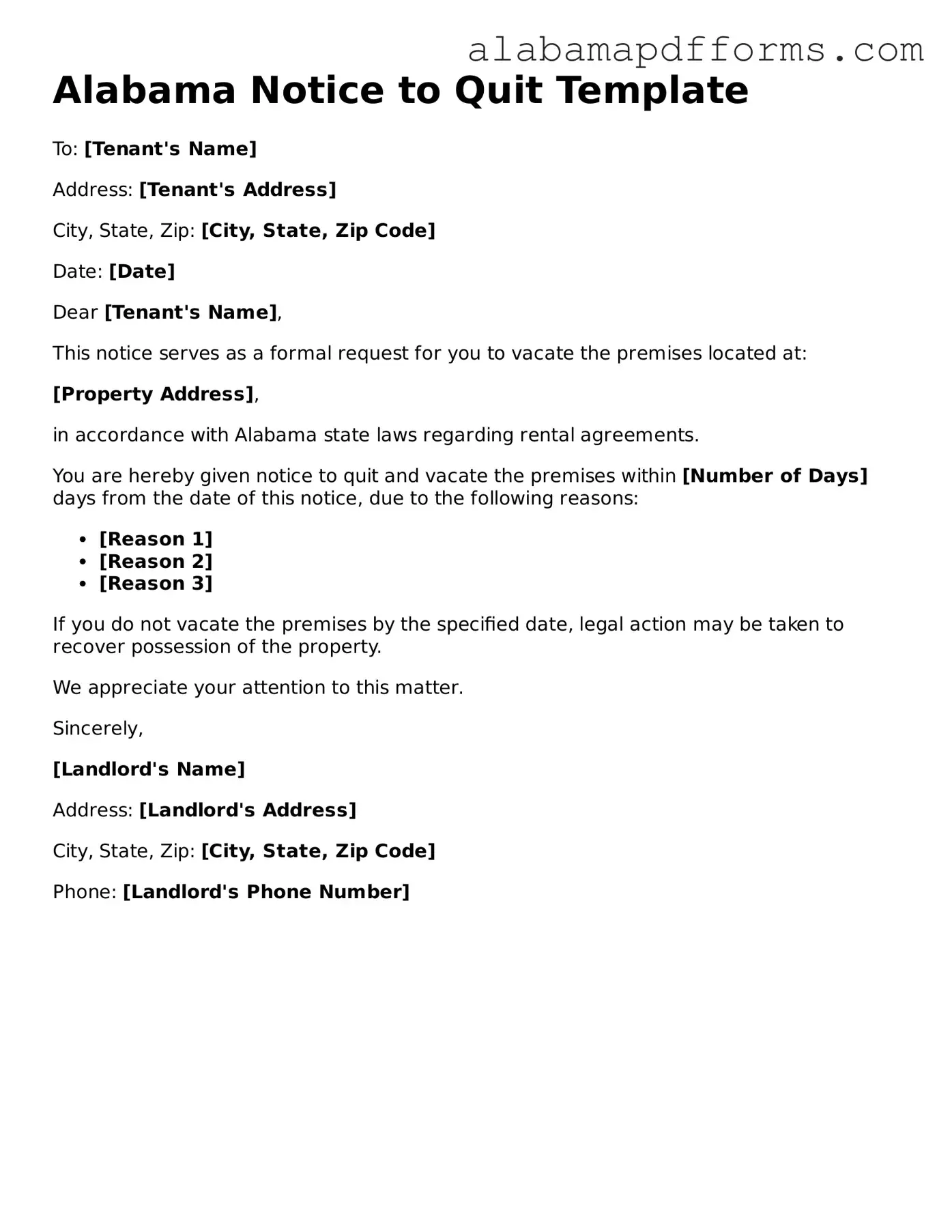Legal Notice to Quit Document for the State of Alabama
The Alabama Notice to Quit form is a legal document that landlords use to inform tenants of their intention to terminate a rental agreement. This notice serves as a formal request for tenants to vacate the premises within a specified timeframe. Understanding this form is crucial for both landlords and tenants to ensure compliance with Alabama's rental laws.
Fill Out Your Document Online
